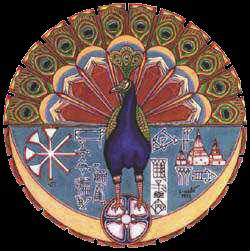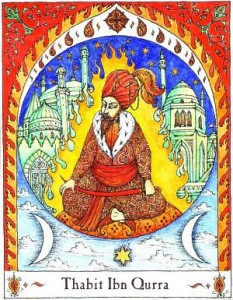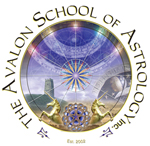THE
VOICE OF THE YESIDI
Copyright © Dave
Mockaitis. All Rights Reserved
In her 2005 memoir, “Love My Rifle More Than You,” linguist
and former intelligence specialist Kayla Williams described her military
experiences near the Northern Iraq-Syria border. The work is unique
because it provides Western civilization an accessible yet brief glimpse
of the Kurdish-speaking group, the Yezidi. The Yezidi, a Kurdish religion
with ancient Indo-European roots, is thought to have developed out
of the prehistoric Mitrhaic and Mesopotamian religious traditions (Yazidi).
Williams was able to interact with the Yezidi in part because the Yezidi
are grateful for the US occupation of Iraq that protects them from
persecution by local Muslims that considered them to be devil-worshippers.
Though she did not study the group extensively, she understood their
religion as very ancient and concerned with angels. Most significant
is Williams encounter with a Yezidi shrine on a mountaintop which she
describes as “a small rock building with objects dangling from
the ceiling” with alcoves for the placement of offerings (Yazidi).
These dangling objects are a contemporary manifestation of an
ancient practice of working with astrological phenomena in a physical,
embodied
way.
 The
iconography of the Yezidi appears to be disproportionately populated
by jars. In the Yezidi version of the myth of Adam and Eve, both
fill jars with their seed and wait to see what grows. When Eve yields
only insects and Adam a beautiful baby boy, humanity is born and
considered to be solely a result of Adam’s divinity. The central
figure of Yezidi faith is Melek Taus, a benevolent angel depicted
as a peacock that fell from grace but redeemed himself. In repenting,
the angel wept for 7,000 years filling seven jars which quenched
the fires of hell (Yezidi, Melek Taus). The image of a jar or crucible,
is pivotal to the work of the Renaissance alchemist. Containing experiments
and energies, these crucibles speak to the notion of embodying and
containing divine, powerful forces. The fact that Melek Talus wept
seven jars is also significant, as the Yezidi believe that God entrusted
the care of the world to a heptad of seven holy beings often conceptualized
as angels (Yezidi). Closer study of Yezidi texts and scriptures may
show that these seven holy beings were in fact created through the
peacock angel’s tears, that through containing such intense
remorse and sadness, compassionate angels were forged.
The
iconography of the Yezidi appears to be disproportionately populated
by jars. In the Yezidi version of the myth of Adam and Eve, both
fill jars with their seed and wait to see what grows. When Eve yields
only insects and Adam a beautiful baby boy, humanity is born and
considered to be solely a result of Adam’s divinity. The central
figure of Yezidi faith is Melek Taus, a benevolent angel depicted
as a peacock that fell from grace but redeemed himself. In repenting,
the angel wept for 7,000 years filling seven jars which quenched
the fires of hell (Yezidi, Melek Taus). The image of a jar or crucible,
is pivotal to the work of the Renaissance alchemist. Containing experiments
and energies, these crucibles speak to the notion of embodying and
containing divine, powerful forces. The fact that Melek Talus wept
seven jars is also significant, as the Yezidi believe that God entrusted
the care of the world to a heptad of seven holy beings often conceptualized
as angels (Yezidi). Closer study of Yezidi texts and scriptures may
show that these seven holy beings were in fact created through the
peacock angel’s tears, that through containing such intense
remorse and sadness, compassionate angels were forged.
This idea of containing and transforming energies in crucibles is
significant in the fact that the voice of the Yezidi speaks strongest
in the texts consulted by Renaissance magicians. The Picatrix has had
a profound influence on Occultists since it was first collated in 10th
century Arabia. Primarily a handbook on talismanic magic, the book
also serves as a compilation of Arabic texts on hermeticism, astrology,
alchemy and magic in the 9th and 10th centuries (Picatrix). Used by
Marsilio Ficino, William Lily, and a host of other astrologers and
magicians past and present, the four volume work describes a way of
working with planetary energies that is grounded in both astrological
practice and material reality. Working with the Picatrix entails harnessing
the energy of an astrological body into a material object so that the
energy can be introduced to situations the mage seeks to change (Warnock,
Picatrix). Instead of deriving information and predictions from the
movement of the stars, many Renaissance astrologers and magicians were
deriving the actual energy of of the planets and fixed stars, themselves.
This materialist approach is grounded in a tradition that can feasibly
trace its roots to the observational astrologers of prehistoric Mesopotamia.
 Thabit
Ibn Qurra translated and collected texts in Baghdad in the late
9th century. His work, De Imaginibus (“On Images”), was a key
source for the Picatrix, as it displayed a sophisticated form of astrological
magic derived from the works of the Harranian Sabians. Fluent in Arabic,
Greek, and Syriac, Ibn Qurra’s services were invaluable at the
House of Wisdom (Bayt al Hakim), a facility in Baghdad that amassed
and translated current and historical texts (Warnock “Ibn Qurra”,
Thabit Ibn Qurra). Ptolemy and Euclid are just two scholars that
were translated by Ibn Qurra. It was his knowledge of Harranian Sabian
esotericism,
though, that may be his most unique contribution to the field.
Born in 836 CE in Harran, Mesopotamia (modern day Turkey), Ibn Qurra
grew
up with the Sabians of Harran, a sect of star-worshippers that
received protection under Muslim rule. Like their cultural descendant,
the Yezidi,
the Harranian Sabians also held a belief system with an emphasis
on the intervention of angels (Sabians). In the angelology of the Harranian
Sabians, the link between these angels and the seven visible
planetary
bodies is clear. The angels are the planets and they are directly
accessible through the appropriate astrological invocation (Sabians).
Renaissance
scholar Christopher Warnock notes that in fact the Harranian
Sabians are the pagan followers of Hermes Trismegistus.
Thabit
Ibn Qurra translated and collected texts in Baghdad in the late
9th century. His work, De Imaginibus (“On Images”), was a key
source for the Picatrix, as it displayed a sophisticated form of astrological
magic derived from the works of the Harranian Sabians. Fluent in Arabic,
Greek, and Syriac, Ibn Qurra’s services were invaluable at the
House of Wisdom (Bayt al Hakim), a facility in Baghdad that amassed
and translated current and historical texts (Warnock “Ibn Qurra”,
Thabit Ibn Qurra). Ptolemy and Euclid are just two scholars that
were translated by Ibn Qurra. It was his knowledge of Harranian Sabian
esotericism,
though, that may be his most unique contribution to the field.
Born in 836 CE in Harran, Mesopotamia (modern day Turkey), Ibn Qurra
grew
up with the Sabians of Harran, a sect of star-worshippers that
received protection under Muslim rule. Like their cultural descendant,
the Yezidi,
the Harranian Sabians also held a belief system with an emphasis
on the intervention of angels (Sabians). In the angelology of the Harranian
Sabians, the link between these angels and the seven visible
planetary
bodies is clear. The angels are the planets and they are directly
accessible through the appropriate astrological invocation (Sabians).
Renaissance
scholar Christopher Warnock notes that in fact the Harranian
Sabians are the pagan followers of Hermes Trismegistus.
 The works of Hermes Trismegistus
occupy an interesting convergence of astrological and magical thought,
as he figures as a sort of mythic
ancestor to both traditions. Worshipped by both Egyptians and
Greeks as an embodiment of Thoth or Mercury, respectively, Hermes
Tristmegistus
is a bit of a mystery. Many Hellenistic astrologers used his
name to imbue their works with authenticity and authority. Tens of
thousands
of texts are attributed to him, which has led scholars to simply
categorize these texts as Hermetica, referring to documents that
contain secret
wisdom, spells and induction procedures from the 2nd and 3rd
centuries CE (Hermes Trismegistus, Hermetica). The emerald tablets
of Hermes
Trismegistus, considered to be one of the oldest Hermetic texts,
contains the phrase “as above, so below,” a dictum used
by many astrologers to explain the correspondence between movements
of the
heavenly bodies and events transpiring on Earth (Emerald Tablet).
The phrase is instructive for magicians as well, as it eloquently
summarizes
the the theory behind the Hermetic practice of sympathetic magic.
The works of Hermes Trismegistus
occupy an interesting convergence of astrological and magical thought,
as he figures as a sort of mythic
ancestor to both traditions. Worshipped by both Egyptians and
Greeks as an embodiment of Thoth or Mercury, respectively, Hermes
Tristmegistus
is a bit of a mystery. Many Hellenistic astrologers used his
name to imbue their works with authenticity and authority. Tens of
thousands
of texts are attributed to him, which has led scholars to simply
categorize these texts as Hermetica, referring to documents that
contain secret
wisdom, spells and induction procedures from the 2nd and 3rd
centuries CE (Hermes Trismegistus, Hermetica). The emerald tablets
of Hermes
Trismegistus, considered to be one of the oldest Hermetic texts,
contains the phrase “as above, so below,” a dictum used
by many astrologers to explain the correspondence between movements
of the
heavenly bodies and events transpiring on Earth (Emerald Tablet).
The phrase is instructive for magicians as well, as it eloquently
summarizes
the the theory behind the Hermetic practice of sympathetic magic.
Hermeticists believe that
everything proceeds from a source referred to as “the one” in a logical, hierarchical manner. The
one source of all has a consciousness which occupies the second tier
of this system. The consciousness is often referred to as the demiurge,
the logos, or thought of the one. It is the repository of ideal forms
and Platonic ideals which generate the next level, the anima mundi
or soul of the cosmos. Warnock describes the anima mundi as “thoughts
in the mind of the divine” (Warnock “Hermetic Gnosis”).
Where the one source is a pure state of being and the demiurge is the
capacity for thought or the possibilities which can be thought, the
anima mundi is the actual content of this universal consciousness.
The celestial world is comprised of the cosmos which occupies the next
level and represents the mechanism which “the one” utilizes
to embody the ideas arising from the anima mundi. Finally, at the bottom
of the ladder is the material form and material world. Here is where
the corporeal experience of humanity lies, the result of a divine source
manifest through the movement of celestial bodies. This theory blends
seamlessly with early Greek Stoic and Platonic thought. The dictum “as
above, so below” describes the connection between the core level
of reality experienced by humans and the movements of the heavenly
bodies. In contemporary astrology, it is generally thought that planetary
phenomena cause or are reflected in events on Earth. However, the magical
tradition takes this concept one step further by harnessing or cocreating
with the planetary phenomena. Many hermeticists feel that these acts
even comprise a spiritual practice because by working with the planets,
they come closer to “the one” (Warnock “Hermetic
Gnosis).
The Picatrix is significant
astrologically because it provides a wealth of examples of astrologers
using Hermetic principles to contain planetary
energies to create effects in the material realm. Furthermore,
it solidifies the connection between the Harranian Sabians and the
Yezidis of Kurdistan.
Four chapters comprise the first book of the Picatrix. The first
three books focus on the astrological and philosophical background
behind
magic, while the fourth which offers direct and explicit instructions “is
about the magic of the Kurds, Nabataeans, and Abyssinians” (Warnock “Picatrix”).
In a work that’s comprised of more than 200 previous magical,
astrological and philosophical texts, it’s significant that these
cultures are specifically mentioned by name (Warnock “Picatrix”).
These cultural groups are also likely the source for the doctrine of
planetary hours, which informs the ways in which an astrologer elects
a chart. The Chaldean order of planets, the basis for working with
planetary hours, was likely developed in Babylon or Mesopotamia many
years before Common Era (Warnock “Planetary Hours,” Chaldea).
It was therefore copresent with the Kurds, Nabataeans and Abyssinians
and surely comprised a part of their magical/astrological practice.
It’s clear that the Picatrix helps chart the metaphysical lineage
of astrology. Already in Ptolemy’s times, there exists a fully
formed mathematical system of divination, but what Ptolemy’s
system lacks is a clear explanation of why the planets represent
that which they symbolize. The magical/astrological tradition represents
a kind of folk-science of trial and error. Approaching the planets
as forces which can be worked with and embodied, the mage is
in a position
of active engagement with the solar system, rather than merely
reporting on what is likely to transpire. The Yezidi are proof, then,
that alternative
astrologies are alive if not doing terribly well. As the descendants
of a group with a materialist approach to the cosmos, the Yezidi
may be the closest living link to the prehistoric Mesopotamian roots
of
astrology.
References

